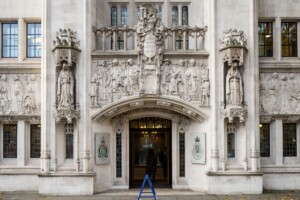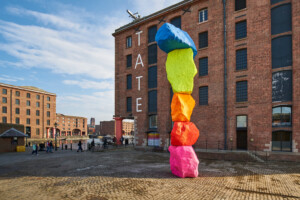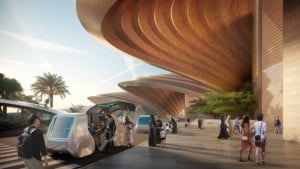By Greg Van Gompel
Related: A Lesson in Amusement Park Security / Petting Zoos too dangerous for young children? / Theme parks & resorts : Pondering safety and legal liability
Setting aside the bankruptcy issue which could be summarily dealt with in a motion to lift the automatic stay of bankruptcy, the real legal nugget of this dispute is whether the amusement rides will be considered fixtures on the land. Like most things legal, it will depend on the factfinder and the lease agreement, as a quick search of some case law shows you can make an argument for each side.
In the case of In the Matter of the CITY OF NEW YORK, Appellant, Relative to Acquiring Title to Real Property for a Project Known as COLLEGE POINT INDUSTRIAL PARK URBAN RENEWAL PROJECT II in the Borough of Queens. G & C AMUSEMENTS, INC., et al., 434 N.E.2d 1038 (1982), Tenants, G & C Amusement, on property taken by eminent domain appealed from final decree of Supreme Court, Queens County, denying them compensation for fixtures. The court stated that “at the time of taking, an owner of a leasehold interest is entitled to compensation for the value of his leasehold and an owner of trade fixtures installed on the property subject to the leasehold is entitled to compensation for the value of those fixtures. This rule of law applies regardless of whether or not the owner of the fixtures is also the owner of the fee.” By the terms of the lease in this instance, “[a]ll improvements [made would] become the property of the landlord [City] on annexation.” The courts found that the trade fixtures claimants seek to be compensated for were permanently annexed to this property and were installed prior to the date of condemnation. Thus, under the terms of the lease, “there can be no question but that as of the date title vested with the City pursuant to the condemnation petition the fixtures were the property of the landlord. Claimants are thus not entitled to any compensation for these trade fixtures.”
A much earlier case, Moss v. Rocky Point Park, Inc., 81 R.I.327, 103 A.2d 72 (1954), discussed trade fixtures in terms of an action of trover and conversion with reference to sale by defendant of an amusement ride of plaintiff located in defendant’s amusement park. The evidence in that case showed “that the ride was subject to assembly by nuts and bolts; that the cement center pier was used only as an anchorage for the central spindle; and that the ride could be dismantled and all the cement piers removed, if desired, without substantial damage to the land.” There was no convincing evidence that plaintiff or any of the previous owners and operators of the park intended or ever considered that the ride was affixed as a permanent improvement to the land, and there was positive testimony to the contrary. Under these circumstances, considering the intention of the parties and the nature of the ride, the only reasonable conclusion is that it was a trade fixture and therefore did not lose its identity as personal property.
A recent Kentucky case, Southern Industrial, LLC v. Maxine, LLC 2009 WL 4060698, 4 (Ky.App.) (Ky.App., 2009) discussed trade fixtures in the State of Kentucky. The court said that an item of property that a lessee annexes to realty, belonging to a lessee, and used by the lessee for purposes of trade is generally regarded as remaining personal property, rather than becoming real property, based upon principles of public policy and a desire to encourage trade and manufacturing. Van Ness v. Pacard, 2 Pet. 137, 27 U.S. 137, 143-44, 7 L.Ed. 374, 376-77 (1829). This is because the intent of annexing a trade fixture to the land is to benefit the business of the party annexing the fixture to the land, not the land itself. This exception applies in the context of several relationships and, of relevance to this case, applies in the context of lessor-lessee and landlord-tenant.
Dating back to the 19th century, Kentucky courts have consistently classified trade fixtures as “personal property, ” and recognized the right of a tenant to remove fixtures erected by the tenant at his own expense, “modified to meet the wants and necessities of trade and commerce and the arts and sciences.” See, e.g., Thomas v. Crout, 68 Ky. 37, 5 Bush 37, 40 (1868); see also Davis’ Adm’r v. Eastham, 81 Ky. 116, 4 Ky. L. Rptr. 850, 852 (1883) (“[B]etween landlord and tenant, [the law of fixtures] gives the greatest latitude and indulgence to the claim of articles as personal property; the rule being still broadened with reference to articles used for manufacturing and trade[.]”)
In sum, Kentucky law defines a “trade fixture” as the personal property of a lessee, specifically “an article annexed by the lessee to the real estate to aid him in carrying on his trade or business on the premises[, ] which may be removed at the end of a tenant’s term.” Bank of Shelbyville v. Hartford, 268 Ky. 135, 104 S.W.2d 217, 219 (1937). As such, the hallmark for the trade fixtures test is intent: “[t]he sole question is, whether it is designed for purposes of trade or not.” Van Ness, 27 U.S. at 146; see also Doll, 24 S.W.2d at 948 (“[T]he intention of the owner as to its use … is of controlling importance in determining the question.”)
Six Flags will argue that the rides are trade fixtures designed for trade and are made of nuts and bolts and can be easily removed from the real property without greatly disturbing the real property. Kentucky State Fair officials will look to its lease to see how it describes the relationship of the rides to the real property and contend that that the intentions of erecting the rides were twofold, to provide rides for the Kentucky State Fair and to have an operator to use the rides while the fair was not in operation. I’ll keep you updated on this legal issue. A pretrial conference in this dispute is scheduled for April 14th.
State officials contend that the rides are considered fixtures to the land on which Kentucky Kingdom sits, much of which is owned by the Kentucky State Fair Board.








